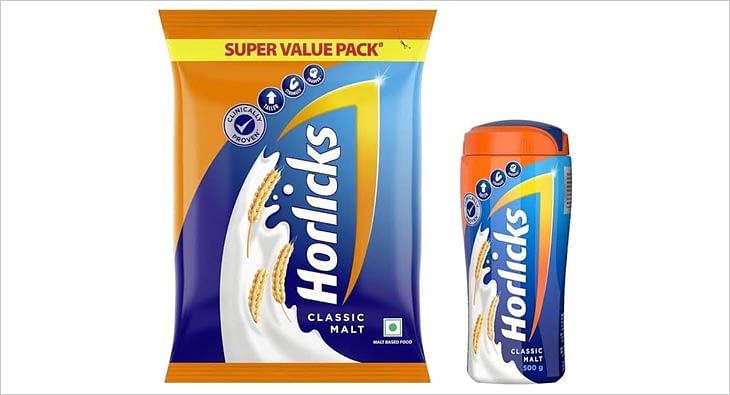Guest Column: The big social media lesson for Flipkart
It is all about instant karma on social media where the e-commerce player's reputation was shred to bits by disgruntled and vocal consumers, says Bhavani Giddu, CEO, Footprint Global

‘So much depends on reputation— guard it with your life’, said a wise man once. This is even more relevant in today’s social media times of ‘instant karma’. A small crack in reputation and public opinion pulls you down. It is the power of a click that can build or break brand reputation. Social media is not about technology; it is about public – real people, their connections, their emotions, and their expressions of happiness and angst, all instantaneous.
In imitation of the Black Friday sale in the USA, Flipkart’s Big Billion Day sale not only invited disgruntled shoppers’ ire but also invited government scrutiny, allegations of predatory pricing and technical glitches. Buyers took to social media to vent their frustration and anger after they were unable to make the best of Big Billion Day sale. It was the power of a click that flipped Flipkart’s Big Billion Day event into billion backlashes on social media. Flipkart spoof hashtags like #Failkart, #Flopkart, #Flippedkart were trending across Twitter and Facebook all day.
Flipkart’s mega online flash sale was a success or not is not the big billion question. We need to ask the bigger question – What should Flipkart do next?
Flipkart’s biggest lesson is that social media is all about instant justice. Social media has arrived with a big bang in India. Flipkart saw the power of how a groundswell of angry and disgruntled buyers can damage reputation on social media.
Flipkart’s apology to its database of users came as a soothing balm to angry consumers. But it does not end there. Consumers want to know how Flipkart is fixing its errors, how they plan to make up for letting many consumers down and whether Flipkart is in control of the situation. There is a greater call for transparency from brands as consumers are armed with social media tools to spread the message, gather support from their communities, friends and families to boycott products and brands. Therefore, brands need to communicate more authentically and be more accountable. Consumers are no longer forgiving, definitely not on social media.
Thanks to e-commerce and social media, there is a fundamental shift in consumer purchasing behaviour. Social media’s explosion of social content like recommendations has a real impact in people's day-to-day lives, including what we buy and how much we are willing to pay. Hence, brands need a more powerful, accountable, transparent and genuine communication strategy to connect with their consumers online.
Flipkart’s apology was a genuine personal attempt to reach out to their customers and reflected a sense of introspection. However, no one cares if you’re sorry, if you do not demonstrate your credibility by communicating how you will salvage the situation. Flipkart needs to communicate decisive action that they will take to address the big let-down. Flipkart needs to rethink their social media strategy and strongly communicate their commitment to their consumers. Through social media, Flipkart should precisely explain their action plan to ensure the fix is effective and enduring.
Social media is an epic. It's growing rapidly. You can love it or hate it but simply cannot afford to ignore it.
The author is the Founder CEO of Footprint Global Communications
Read more news about Marketing News, Advertising News, PR and Corporate Communication News, Digital News, People Movement News
For more updates, be socially connected with us onInstagram, LinkedIn, Twitter, Facebook, Youtube, Whatsapp & Google News
About 60% Instagram influencers in India have fake followers: Report
As per a media report, influencer marketing platform KlugKlug has found that only 2.48 million profiles out of the 8 million have ‘high-quality’ followers
Two of three Instagram influencers in India have more than 60 per cent fake followers, a report by influencer marketing platform KlugKlug shows.
This is particularly true for the beauty and fashion sector, the report noted.
Other countries that have influencers with fake followers are Brazil, the UAE and Indonesia.
As per media reports, such Instagram fake followers can be roped in for as little as Rs 10 to a high of Rs 1,000.
According to Klug Klug India, only 2.48 million profiles out of the 8 million have high-quality followers.
A number of other categories have also been buying fake followers, media reports have noted.
As per a media expert, quoted in the reports, brands are finding it difficult to identify and curb the menace of fake followers and bots.
In a recent setback for influencers the Central Consumer Protection Authority (CCPA) has said those promoting activities like gambling and betting are equally liable as the companies promoting the same.
15% consumers enhance their user experience through virtual assistants: Kantar report
According to Soumya Mohanty, Managing Director & Chief Client Officer- South Asia, Insights Division, Kantar, less than 1% of ads get tested due to lack of time
Marketing data and analytics firm Kantar has unveiled a report that studies the burgeoning AI market to dish out actionable insights for marketers. Within AI, virtual assistants are the fastest growing segment. The report noted that 15% consumers enhanced their ‘user experience through virtual assistants’. This segment is the fastest growing at 27% YoY.
According to the study, while ‘fitness’ and ‘social media’ apps are amongst the leading categories, driving AI adoption (with an average of 2.3 AI led features embedded in these applications), segments like ‘BFSI’, ‘job search’ and ‘short video’ apps are relatively slow in AI adoption, with an average of 1.2 features each. Entertainment apps, digital commerce and pharmacy apps stand somewhere in the middle with 2.0 & 1.8 AI features being adopted, respectively.
Additionally, the report said that while 90% of marketing and sales leaders think their organisations should be using AI “often”, 60% said their organisations “rarely or never” do. Speaking to exchange4media, Soumya Mohanty, Managing Director & Chief Client Officer- South Asia, Insights Division, Kantar highlighted that currently there are a lot of organisations who know that there is something called AI, but haven’t yet figured out how it could help them holistically.
“A lot of the AI just gets used for efficiency purposes, so repetitive tasks get automated,” Mohanty pointed out. Data also plays a big role in why certain organisations are struggling with how to use AI.
For instance, Mohanty explained that in segments like D2C, telecom etc. there is a lot of primary or first-party data. So being able to leverage AI also gets easier. “It's the traditional large sort of FMCG type companies where data sits in silos. You don't really have one single source of data where it's a little difficult to use the full power of AI, because the full power of AI also needs a lot of data sitting in a structure that you can use,” she added.
So, can AI help marketers have a unified view of data? No, says Mohanty. “AI does not help marketers get a unified view of data. Once you have data in a unified way, AI can help you do a lot more with that data.”
According to her, organisations today need to have good, strong data warehousing. “It needs to make sense because a lot of the silos are also because everybody owns one part of it. A lot of people have their own analytics teams internally, so there are a lot of agendas and stakeholders. And then we say data is in silos because fundamentally, when you're doing something internally, different people have different stakes in it,” Mohanty added.
Puneet Avasthi, Senior Executive Director, South Asia, Insights Division, Kantar shared that most organisations are now heavily investing in creating first-party data sets. “Companies that have first party data about their consumers and transactions or interactions that they have with the brand are going to be able to leverage that more effectively to create sharper profiles for the brand as such for the consumer and build relevant recommendations at the right moments.
Panning out she also highlighted how AI can be leveraged to enhance market research and make it more accessible, a part of which Kantar is itself involved in. “A lot of times people say that we can't test an ad because we don't have time. So less than 1% of advertising gets tested and just gets put out. Does it work when it gets put out? It is the question the audience should answer, because so many times, it backfires,” Mohanty shared. Apparently, digital particularly doesn't get tested because organisations just do a/b testing and leave it at that.
Speaking of preferred use cases of AI, Avasthi added that various businesses and brands are looking at creating an experience for the brand that is in line with the brand's architecture and progress across all touch points. “That is something that the AI engines that are working behind can ensure, that all such interactions are consistently delivered across different virtual assistants or chatbots that are available to the consumer,” he said.
The other use case, according to Avasthi, is ensuring that there is greater visibility for the brand in the digital sphere as such, through various recommendation engines, when a certain need is being looked for and to throw up the right kind of information about the brand so that the brand message is amplified in the mind of the consumers.
Among other insights from the Kantar AI report is that 88% consumers used AI based algorithms which analysed their preferences, behaviours, and interests to create personalised recommendations for tailored experiences. This segment grew at 6 % YoY. At 21%, ‘smart home automation’ is a smaller segment but growing at 25% YoY.












 Share
Share
